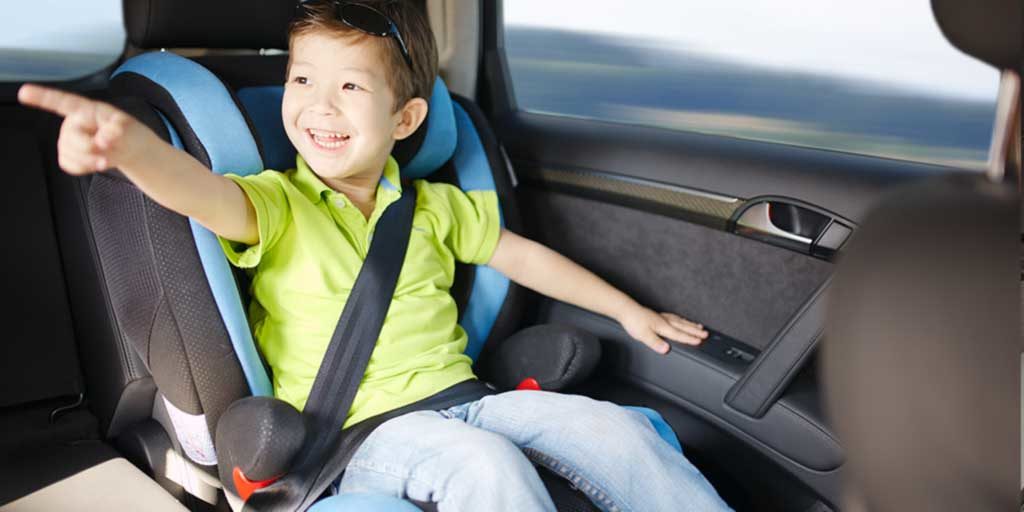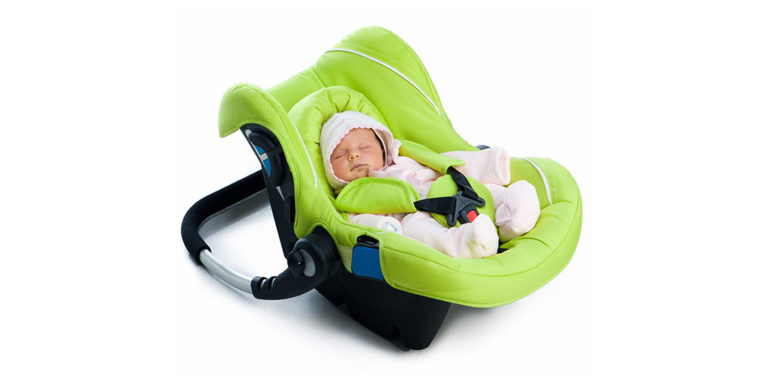You can help protect your child from injury by ensuring that your child’s safety seat is properly installed. Seven out of ten children in safety seats are not properly buckled in. With the constant introduction of new car seat safety features and the continual change in seat belt laws, it can be hard to keep track of what is and what is not considered safe when it comes to the way your child rides in your vehicle:
- Babies should ride in a rear facing infant car seat until they are 30 pounds AND 2 years old.
- Children who reach the weight limit on their infant car seats before they are 1 year old must then be moved to a rear-facing convertible car seat.
Most studies show that it is much safer for children to continue to ride rear-facing until they reach the rear facing weight limit on their car seat, which for most convertible car seats is 35-45 pounds.
Car Seat Safety: The Basics
Nearly all child safety seats and vehicles manufactured after September 1, 2002 are equipped with the Lower Anchor and Tethers for Children (LATCH) system:
- The LATCH system makes it easier to properly install the car seat; it is not necessarily safer than using seatbelts to install car seats. A car seat that is properly installed with a seatbelt should be just as safe as one properly installed with LATCH. DO NOT USE BOTH.
- Children should be in a car seat or booster seat until they reach 4’9”, which is the height they can be seated properly in a regular seatbelt. Your child will not be ready to use regular seatbelts until the shoulder strap fits across his shoulders and not his neck, and the lap and the lap belt fits across his hips and not his stomach.
- Always read the owner’s manuals for your vehicle and car seat thoroughly. They often contain specific information about car seat installation that may not be obvious. You should always have your child’s safety seat inspected to be sure it is properly installed and is being used properly. Call 1-866-SEATCHECK or visit www.seatcheck.org to locate a certified inspection station in your area.
- Avoid used car seats over 6 years old, those with an unknown history that may have been in a crash, those that show any form of cracks or damage and those with missing labels, model number, manufacturing date, instructions or parts.
- Replace any car seats that have been involved in accidents. Even though the car seat may look as though it hasn’t been damaged, there is no way to know if the structural integrity of the may have been compromised.
- Children under 12 years old and under 80 pounds should ALWAYS ride in the backseat.

The Different Types of Child Safety Seats
Infant-only Seats
These seats are rear-facing only and are used for infants from birth until they reach the weight limit on the seat, usually 22-25 pounds, but some go as high as 30 pounds. Most are designed to act as a car seat and carrier. Be sure the seat is reclined at an angle no more than 45 degrees and that the baby’s head does not flop forward. Most children will outgrow the infant seat prior to their first birthday and should then use a rear-facing convertible car seat.
Convertible Seats
Convertible can be used rear-facing for an infant and then forward facing for an older toddler. Remember, children MUST ride rear-facing until they are at least 1 year old AND 20 pounds; however, it is now recommended that children remain rear-facing until they are 2 years old AND 30 pounds. It is safer for children to continue to ride rear-facing until they reach the rear-facing weight limit on the seat, which for most convertible seats is 35-40 pounds. Convertible car seats usually carry a forward-facing weight limit of 45-65 pounds, depending on the model.
Combination Seats
Combination seats can be used with a harness to 40 pounds and then converted into a belt-positioning booster seat for older children. Once the child reaches the weight limit for the harness, you MUST stop using the harness. Generally, they are rated for use from 20-22 to 40-50 lbs in the harnessed mode and 30-33 to 80-100 lbs in the belt positioning mode
Booster Seats
Booster seats are used to lift a child up and properly position the lap/shoulder belts on children who are still too small to properly fit the adult seatbelt. Boosters are generally rated for use from 30-40 pounds up to 80-100 pounds and do not have a harness. Even though many boosters have a minimum weight limit of 30 pounds, a booster should not be the next purchase when your child outgrows a convertible seat. Children are safest if they remain in a harnessed seat until they reach at least 40 pounds. If your child is too tall for a forward-facing convertible car seat but is not heavy enough (40 pounds) to move to a booster, a combination seat should be used.
Steve Kuzmich is a Board Certified – Personal Injury Trial Lawyer by the Texas Board of Legal Specialization. The Kuzmich Law Firms’ focus practice areas are auto and trucking accidents, wrongful death and other serious injuries, injuries caused by drunk drivers, child injury cases, (slip and fall accidents) premises liability, and dog bite cases.
For further information about personal injury litigation, call as at 972.434.1555 and ask us why board certification matters.
